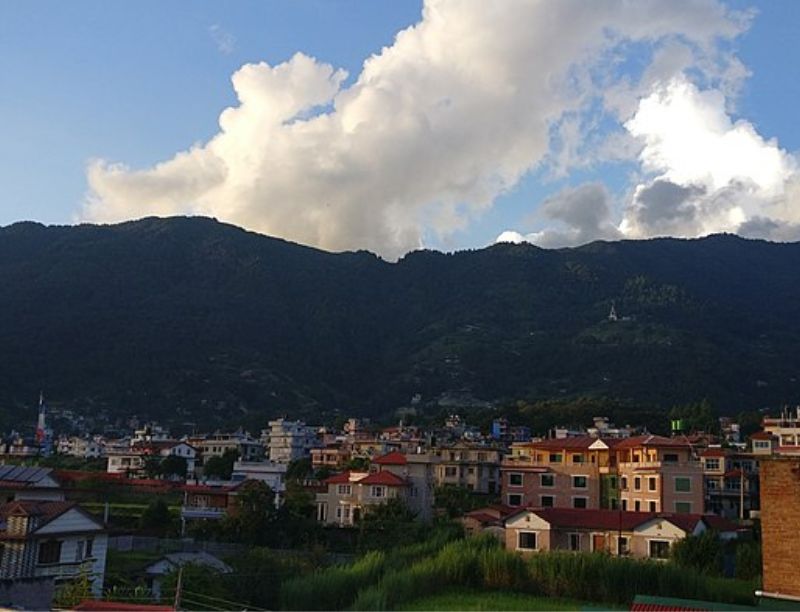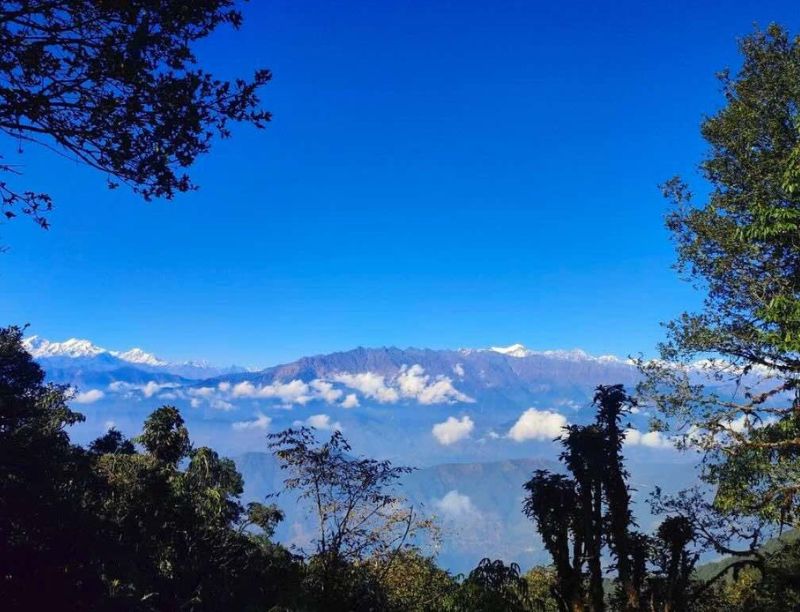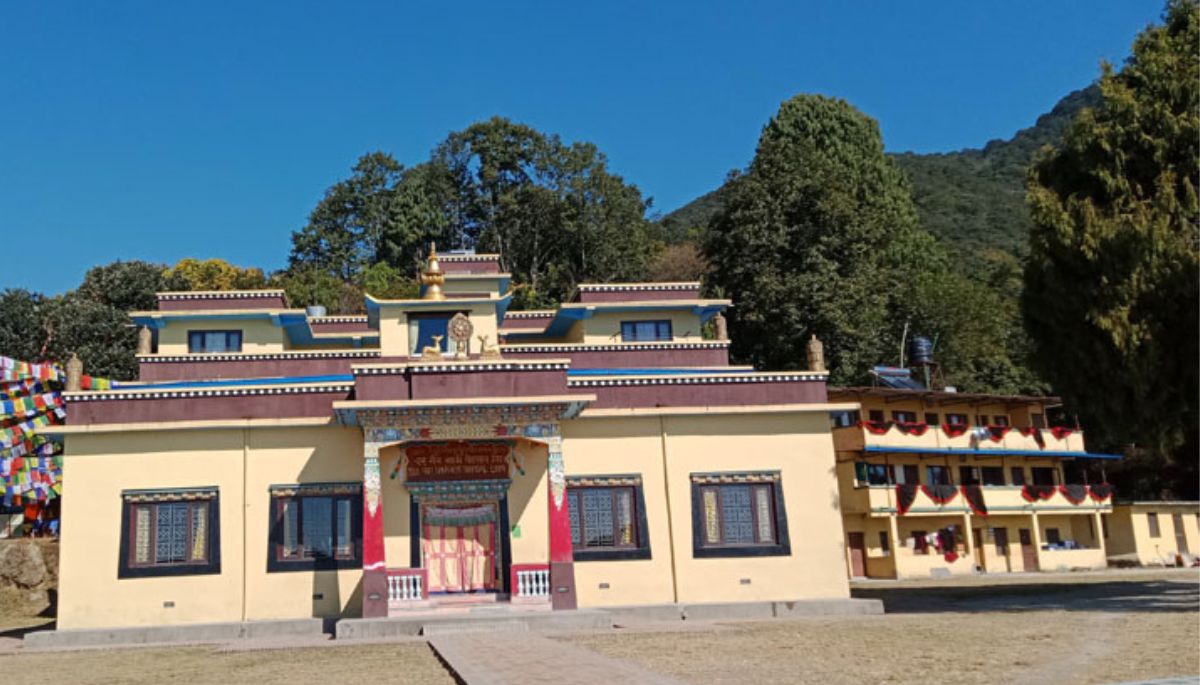Introduction
Nestled within the lush hills of the Shivapuri National Park, Nagi Gumba is a serene Buddhist monastery that offers an ideal destination for a tranquil hike near Kathmandu. Situated at a height of roughly 1,650 meters, Nagi Gumba is not just a spiritual retreat but also a haven for nature lovers. The hike to Nagi Gumba is popular among both locals and tourists for its breathtaking views, peaceful environment, and the opportunity to immerse oneself enjoy the pristine splendor of the nearby woodlands.
Route Overview
The journey to Nagi Gumba typically begins from the bustling town of Budhanilkantha, located about 10 kilometers from the heart of Kathmandu. From Budhanilkantha, the trail ascends through the verdant forests of the Shivapuri National Park. The entire hike to Nagi Gumba covers a distance of around 6 kilometers, taking approximately 2 to 3 hours to reach the monastery, depending on one’s pace.
Also Read: Exploring the Hidden Gem: Suryachaur to Tinpiple Hike
The Starting Point: Budhanilkantha
Budhanilkantha is famous for the Budhanilkantha Temple, a sacred site dedicated to Lord Vishnu. Many hikers visit the temple before starting their hike. The temple is renowned for its impressive statue of Lord Vishnu curled up atop the snake Shesha, a sight that is both awe-inspiring and deeply spiritual.

From Budhanilkantha, the hike begins with a gradual ascent along a well-marked trail. The first section of the trail is relatively easy, winding through small villages and terraced fields, offering glimpses of rural life in Nepal. As you leave the village behind, the path gradually enters the dense forest of the Shivapuri National Park.
Journey Through Shivapuri National Park
Shivapuri National Park is a protected area home to diverse flora and fauna. The forest is dominated by towering pine, oak, and rhododendron trees, providing a relaxed, shaded environment perfect for hiking. The park is a birdwatcher’s paradise, with over 300 species of birds identified there. Watch for species like the Spiny Babbler, Nepal’s national bird, and other exotic birds like the Himalayan Monal and Rufous-bellied Niltava.
As you ascend higher, the forest becomes denser and the trail steeper. The air here is crisp and fresh, a refreshing change from the city’s pollution.
Arrival at Nagi Gumba
After a steady climb, the forest suddenly opens up to reveal Nagi Gumba, perched on a hillside with panoramic views of the Kathmandu Valley below. The monastery is surrounded by a large open area, with prayer flags fluttering in the breeze, adding to the peaceful atmosphere. The monastery’s red and white buildings amid lush green hills create a breathtaking and memorable sight.
Nagi Gumba is a nunnery home to around 100 nuns who have dedicated their lives to Buddhist practices. The monastery is a place of learning and meditation, and visitors are often welcomed with warm grins and a cup of tea offered. The nuns warmly welcome hikers who enjoy the serene environment and learn about Buddhist traditions.
Exploring Nagi Gumba
The monastery is an architectural marvel, with intricately designed stupas, prayer wheels, and statues of Buddha. The main prayer hall is a quiet, dimly lit space adorned with beautiful murals depicting scenes from Buddha’s life. The monastery’s tranquil setting invites visitors to meditate and reflect peacefully.
On a clear day, you can even glimpse the snow-capped peaks of the Langtang range in the distance. Around Nagi Gumba, small shrines and ancient meditation caves add to the area’s serene, historical charm.
The Descent: Returning to Budhanilkantha
After spending time at Nagi Gumba, the hike back to Budhanilkantha is a leisurely descent. The return journey is easier and faster, letting hikers enjoy the forest’s beauty more relaxedly. The downhill path reveals new landscapes, with the afternoon sun casting long shadows and bathing the forest in golden light.
For a longer hike, continue to Shivapuri Peak, the highest point in the park at 2,732 meters. This extension adds another 3 to 4 hours to the hike but rewards trekkers with breathtaking views of the Himalayas, including the Langtang, Ganesh, and Jugal ranges.
Best Time to Hike
The best hiking times for Nagi Gumba are spring (March-May) and fall (September-November). During these times, the weather and the skies are pleasant, offering the best views of the surrounding landscape. Springtime is lovely, with the rhododendron trees in full bloom, painting the forest in shades of pink and red.

Preparation and Tips
- Permits: As Nagi Gumba is located within the Shivapuri National Park, visitors are required to obtain an entry permit at the park’s entrance. It is simple to receive the permit at the Budhanilkantha checkpoint.
- What to Wear: Comfortable hiking shoes are essential since the path may be slick and uneven, particularly in the monsoon season. Dress in layers as temperatures change dramatically from the starting point to higher elevations.
- What to Bring: Carry enough water and snacks for the hike, as the trail has limited facilities. Bring a small first aid kit, a map of the area, and a camera to capture stunning views.
- Respect the Monastery: Nagi Gumba is a house of worship, and guests should conduct themselves with decency. Always get permission before photographing the monastery, dress modestly, and avoid loud noises.
- Hire a Guide: While the trail to Nagi Gumba is well-marked, hiring a local guide can enhance your experience. A guide’s insightful commentary on the local flora, animals, and culture can enhance an educational and pleasurable hike.
Conclusion
The Nagi Gumba Hike offers a unique fusion of natural beauty, cultural immersion, and spiritual tranquility, making it the ideal getaway from Kathmandu’s bustle. Whether you are a seasoned hiker or a casual trekker, the journey to Nagi Gumba promises a rewarding experience. Walking through serene forests and enjoying panoramic views, you’ll reconnect with nature and find a more profound sense of peace. This hike is not just about reaching a destination; it’s about embracing the journey, one step at a time.
Read More: Baghdwar Hike: A Journey to the Source of the Holy Bagmati River


0 Comment